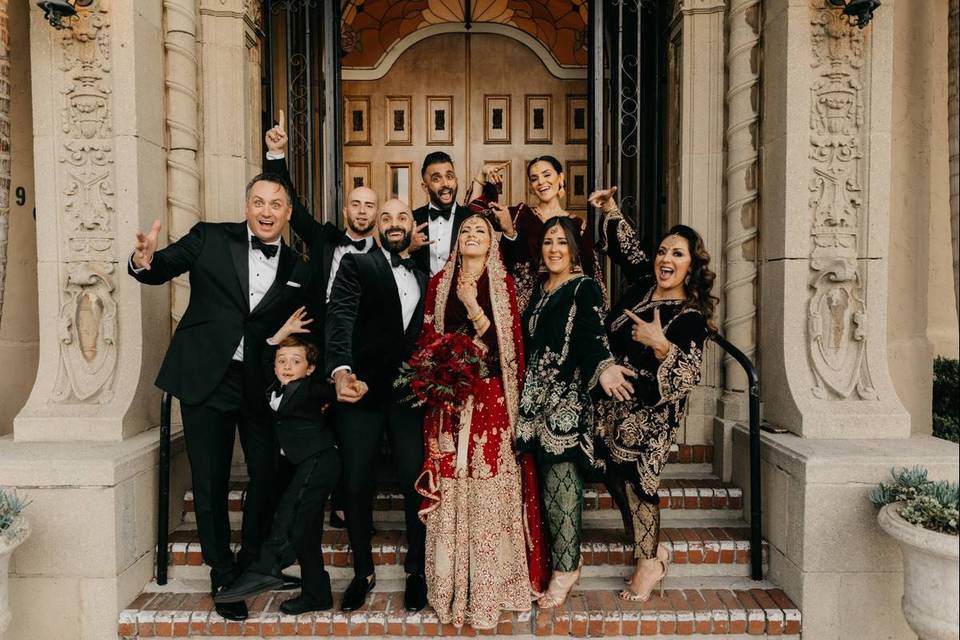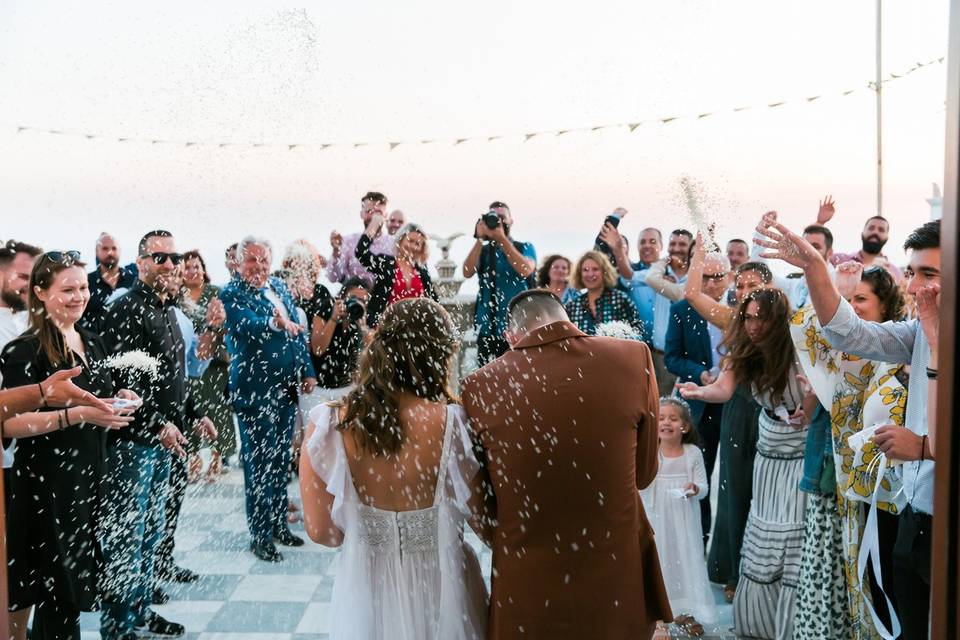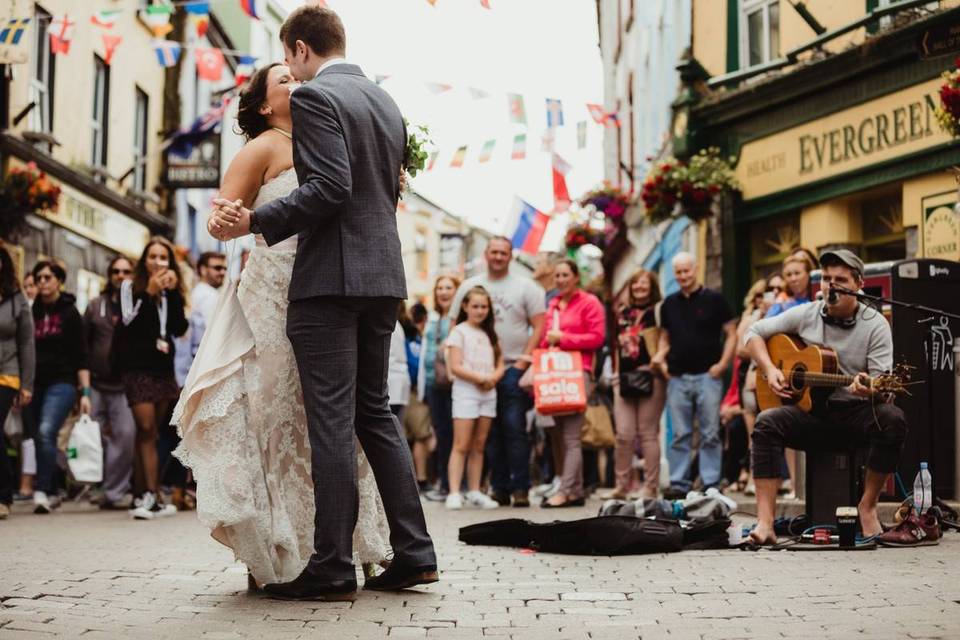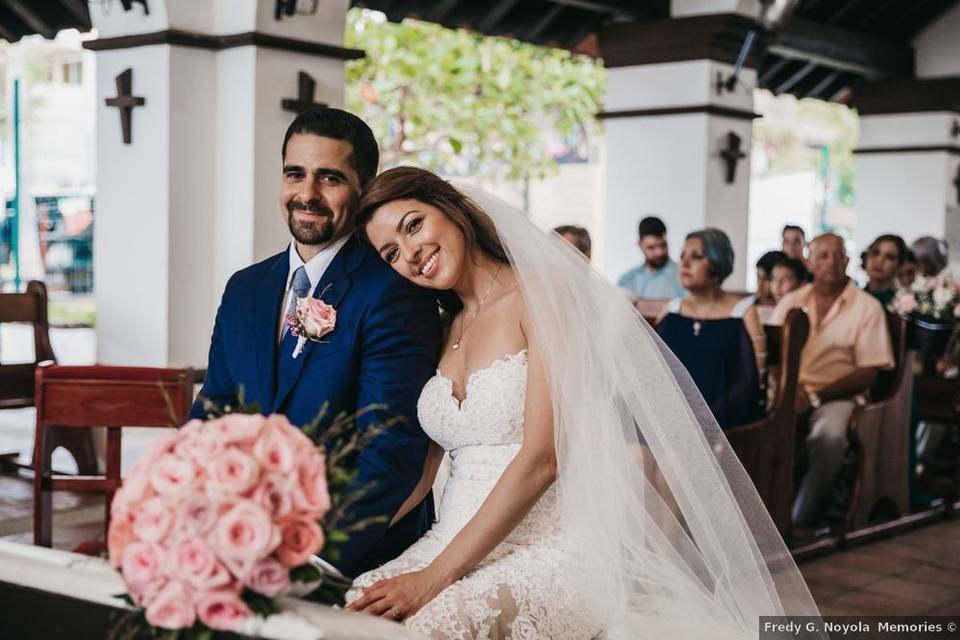Everything to Know About the Handfasting Ceremony Tradition
Personalize your wedding ceremony by incorporating handfasting, a Celtic tradition that symbolizes unity.
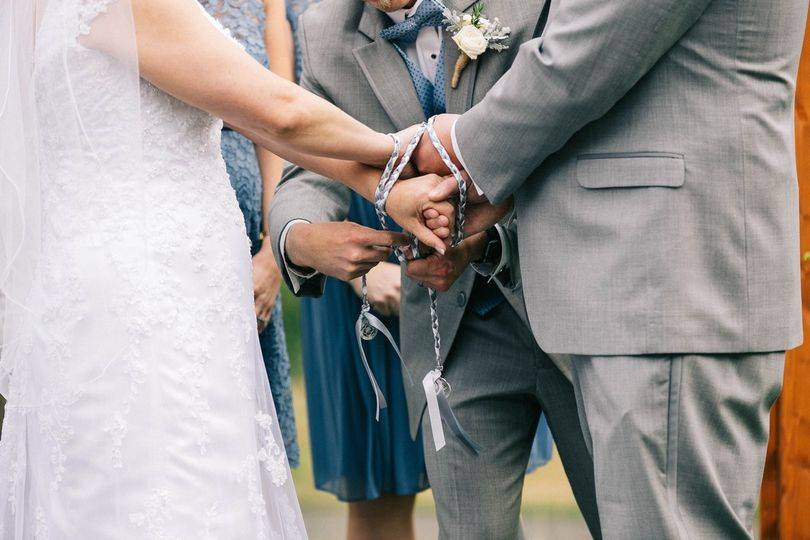
Marriage is the joining of you and your partner—and what better way to celebrate that than with a meaningful unity ceremony at your wedding? One of the most popular choices is handfasting, a Celtic tradition that involves you and your partner's hands being tied together by cords or ribbons. The physical act of "tying the knot" is a lovely representation of your bond and commitment to each other. But if you're planning a handfasting ceremony, you might have questions about what it is, who performs it, and what you need for it. We've got all the answers you need below—plus a shoppable section so you're fully prepared for your handfasting ceremony.
Here's everything you need to know about handfasting—from what it is to how to do it yourself.
What is handfasting?
Handfasting is a Celctic ritual that symbolizes unity. The tradition involves a couple's hands being tied together with cords or ribbons as they face each other (you can also stand side by side and tie your right hand and your partner's left hand together or vice versa). Vows are typically exchanged as the hands are bound together.
The History Behind Handfasting
In ancient times, handfasting was actually an engagement ritual. When two people chose to be married, they partook in a handfasting ceremony with a priest. This signified their engagement, which typically lasted one year. Once the year was up, the couple returned to the priest and declared if they were going to get married or separate.
Today, handfasting is performed at the wedding to signify the couple's love and commitment. While it's commonly conducted at Pagan and Wiccan ceremonies, it has become popular among all couples (since the symbolism behind tying your hands together resonates with many people).
What does a handfasting ceremony entail?
During a handfasting ceremony, the officiant will start by explaining the purpose of the ritual. Next, the couple will join hands. You can place your hands into each other's, stack them or intertwine them—whatever feels right to you. Then, the officiant will read the vows as they wrap the cords or ribbons around the couple's hands. Once the hands are wrapped, the officiant will further explain the symbolism behind the binding. Finally, the couple may exchange additional vows while bound together.
While the ceremony is usually led by the officiant, many couples choose to involve their family members or friends. For example, you could give four different people four different cords or ribbons to tie. It's a creative way to get your loved ones involved (especially if you don't have a wedding party).
When do you perform the handfasting ceremony?
The handfasting ceremony can be performed at any time during the ceremony, but it's usually conducted right before the ring exchange. That way, you're able to say your vows to each other while bound together and then finish off the ceremony with your rings. However, if you'd like to do the ceremony after the ring exchange, work with your officiant to come up with a timeline that feels good to both of you.
You also don't have to perform the handfasting ceremony on your wedding day. You can do it when you get engaged or to celebrate a different milestone, like an important date in your relationship history, your anniversary or your vow renewal.
What do you need for a handfasting ceremony?
For a handfasting ceremony, you need cords or ribbons to tie your hands with. You can choose any colors you'd like: Coordinate with your wedding color scheme or choose colors with a special significance. For example, white is a symbol of purity while red signifies passion. You can personalize the ritual by selecting your favorite colors or the favorite colors of your loved ones. The choice is entirely up to you!
Handfasting Cords to Buy Right Now
Looking for the perfect handfasting cords or ribbons? Below are a few shoppable options you can buy right now.

Charms and Cords custom four-color handfasting cord, from $11, Etsy
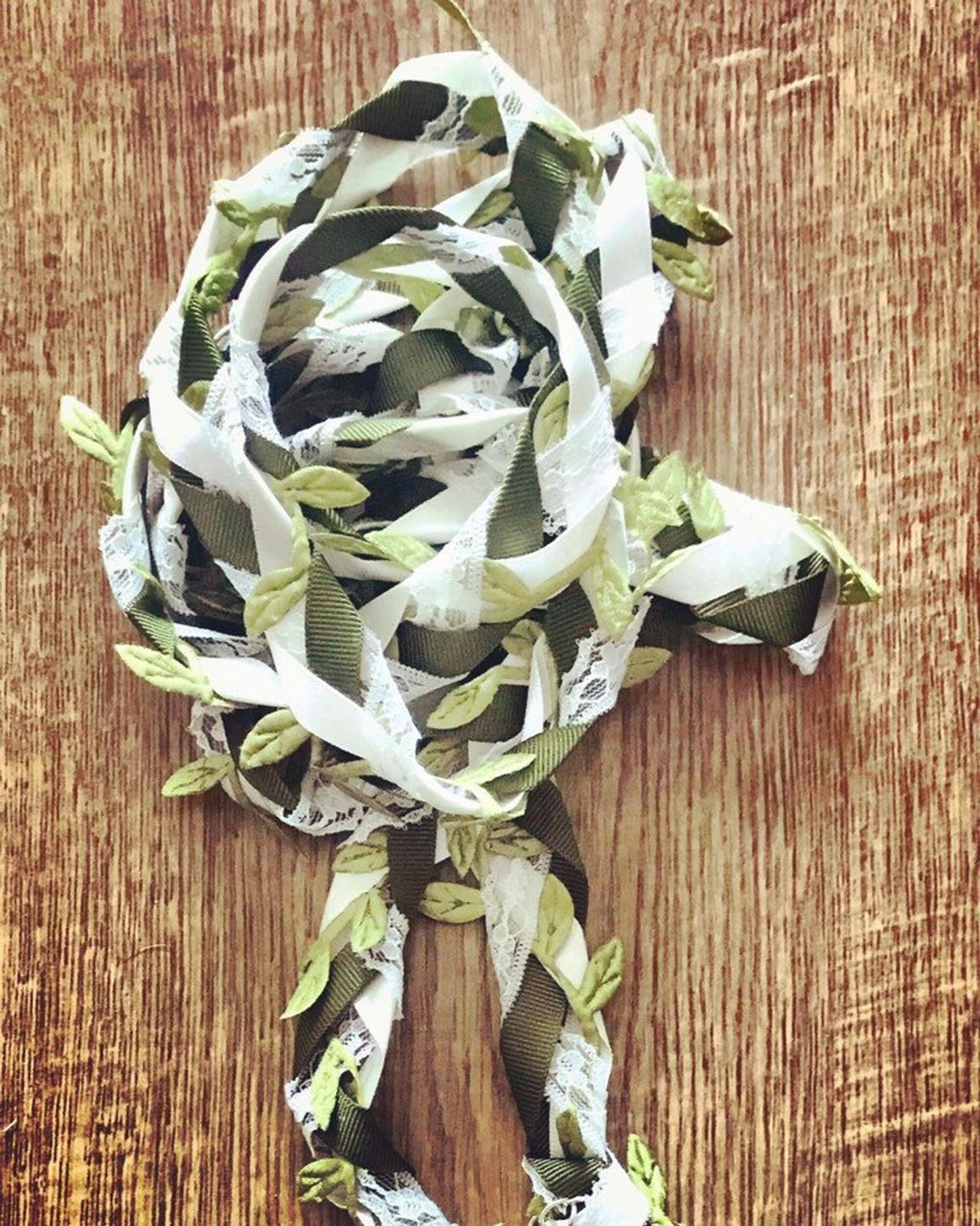
Handfasting Boutique olive, cream and leafy four strand handfasting cord, from $39, Etsy
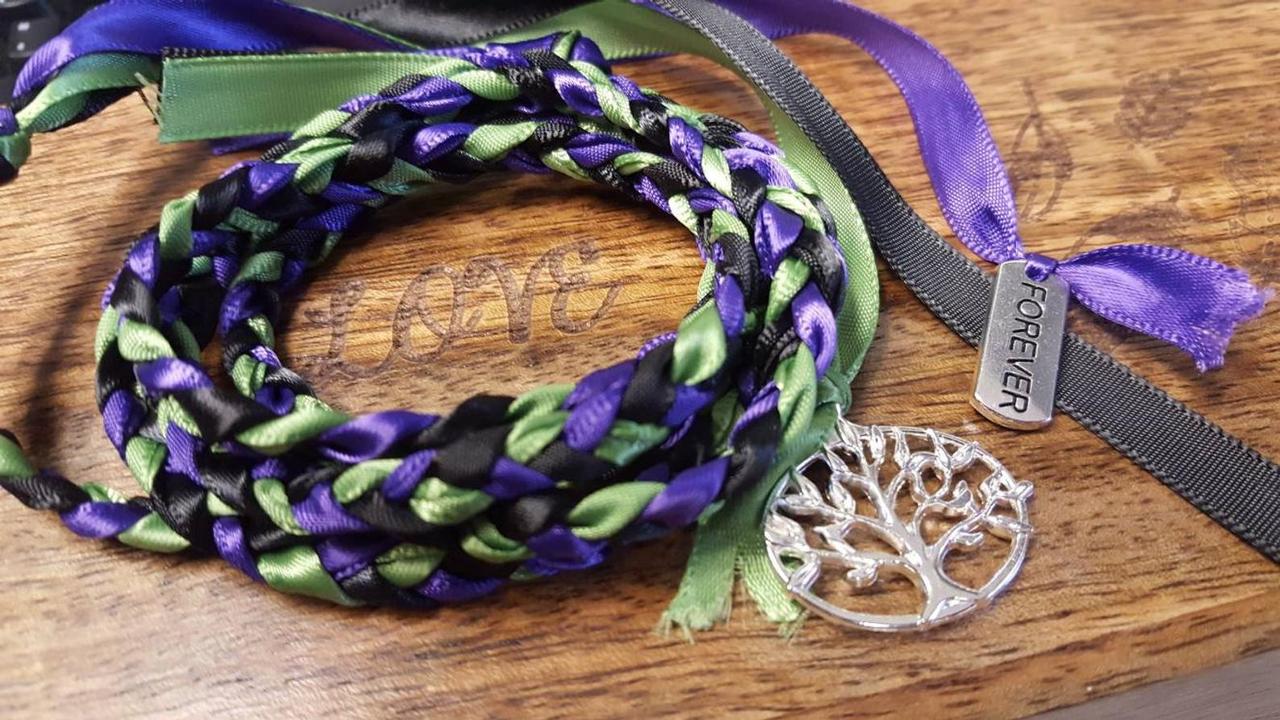
Charms and Cords custom three-color handfasting cord, from $9, Etsy
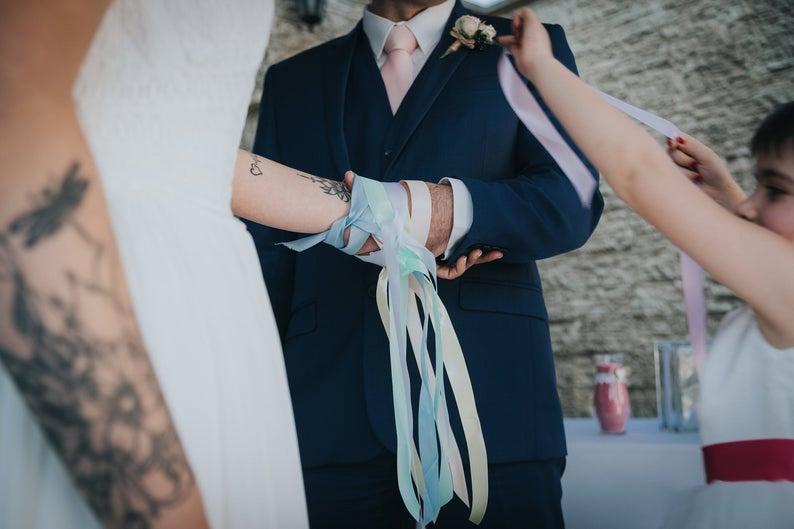
Salvana Crea satin ribbon, from $3, Etsy
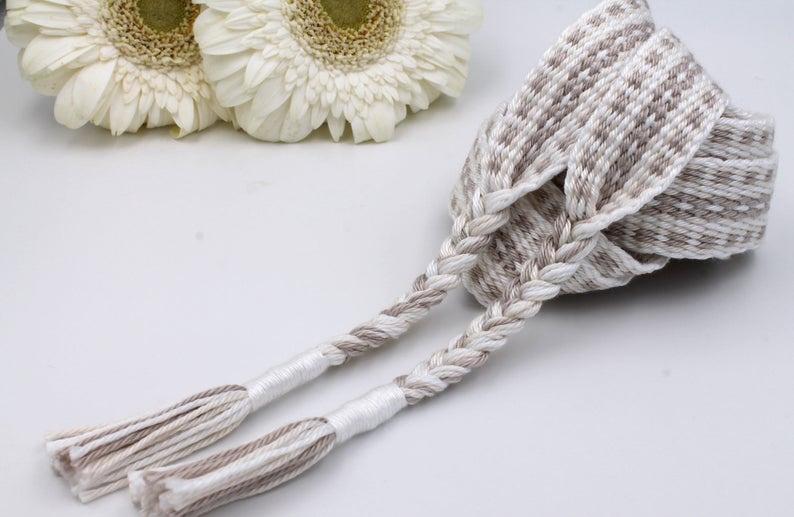
Embracing Cords ivory handfasting cord, $81, Etsy
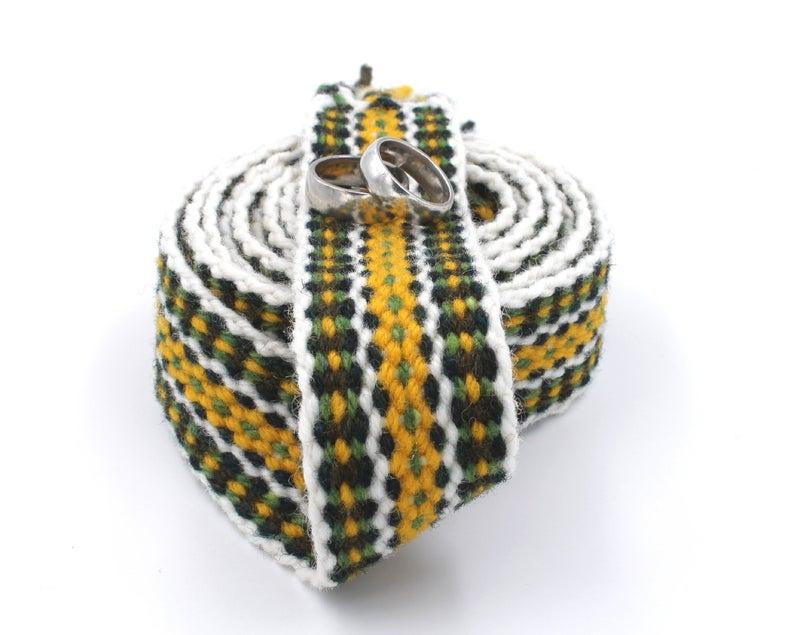
Embracing Union handfasting cord, $82, Etsy
How long should you stay bound?
In ancient times, couples usually remained bound until midnight. But you'll likely want to greet your guests, eat and dance without being tethered together, so feel free to take the ties off after the ceremony. It's best to try and slide the ties off without breaking the knots. If you want to take them home as a keepsake, make sure you put them in a safe place or ask a member of your wedding party to look after them for you.
What are the handfasting vows?
Many times, couples will exchange vows while their hands are still bound together. This is known as the handfasting vows, and it's common among couples everywhere. It's a creative spin on traditional vows, as your hands are tied together while you make your promises to each other. Additionally, it can be great for any nervous to-be-weds, since holding hands with your S.O. can offer comfort and reassurance.
Can anyone participate in handfasting?
Yes, anyone can participate in handfasting. Despite its Celtic origins, couples of all different backgrounds feel connected to the meaning of the ceremony and choose to perform it during their wedding. After all, marriage is all about unity—and tying your hands together is a lovely way to symbolize your unique bond.
Disclosure: This post contains affiliate links, some of which may be sponsored by paying vendors.

